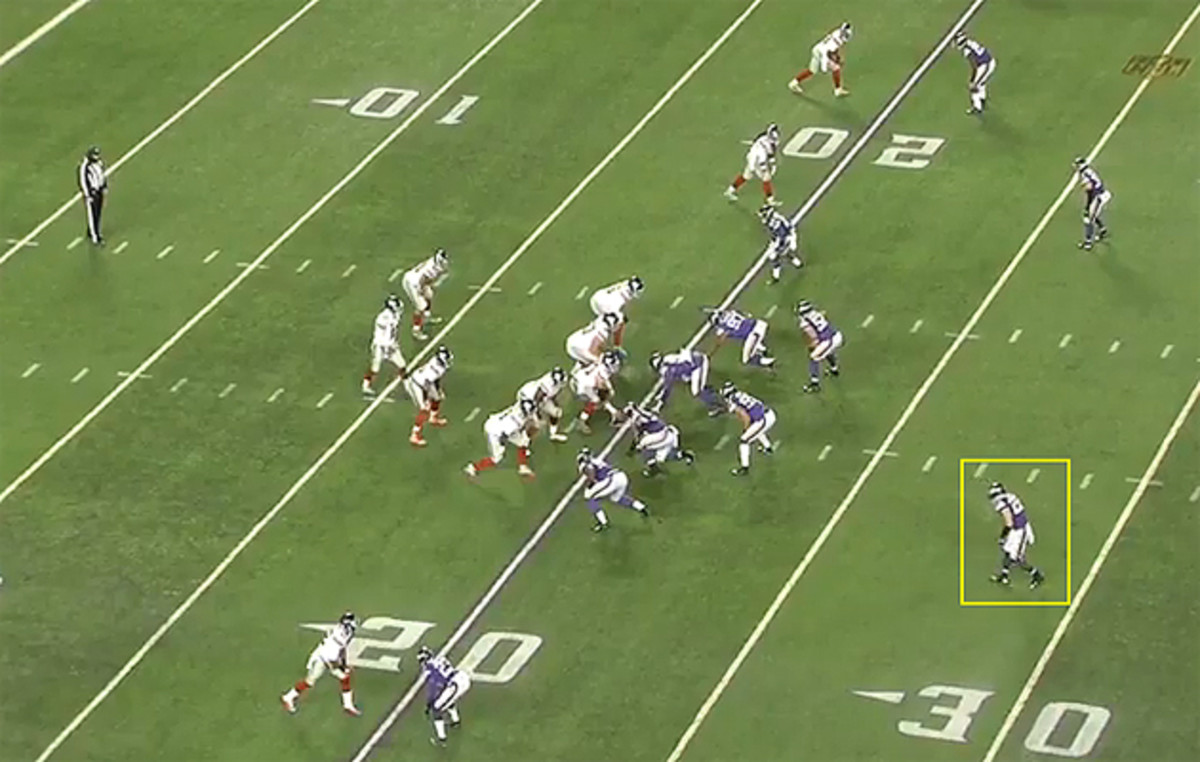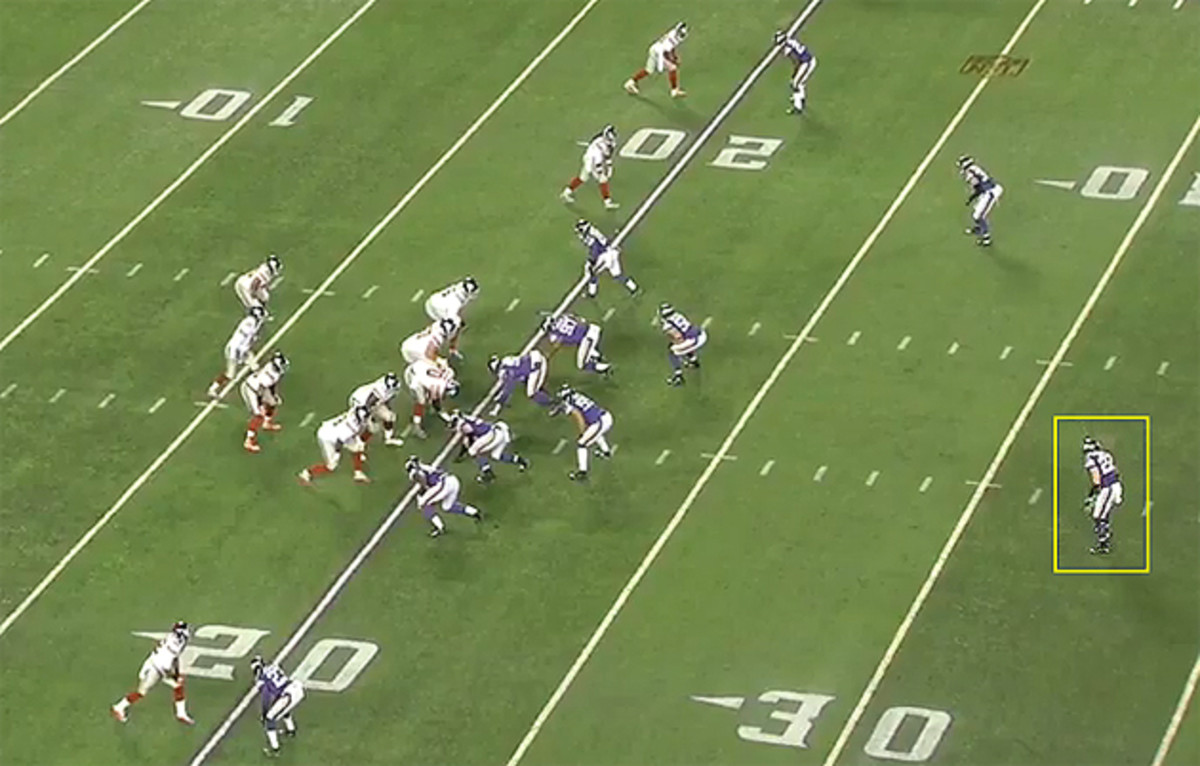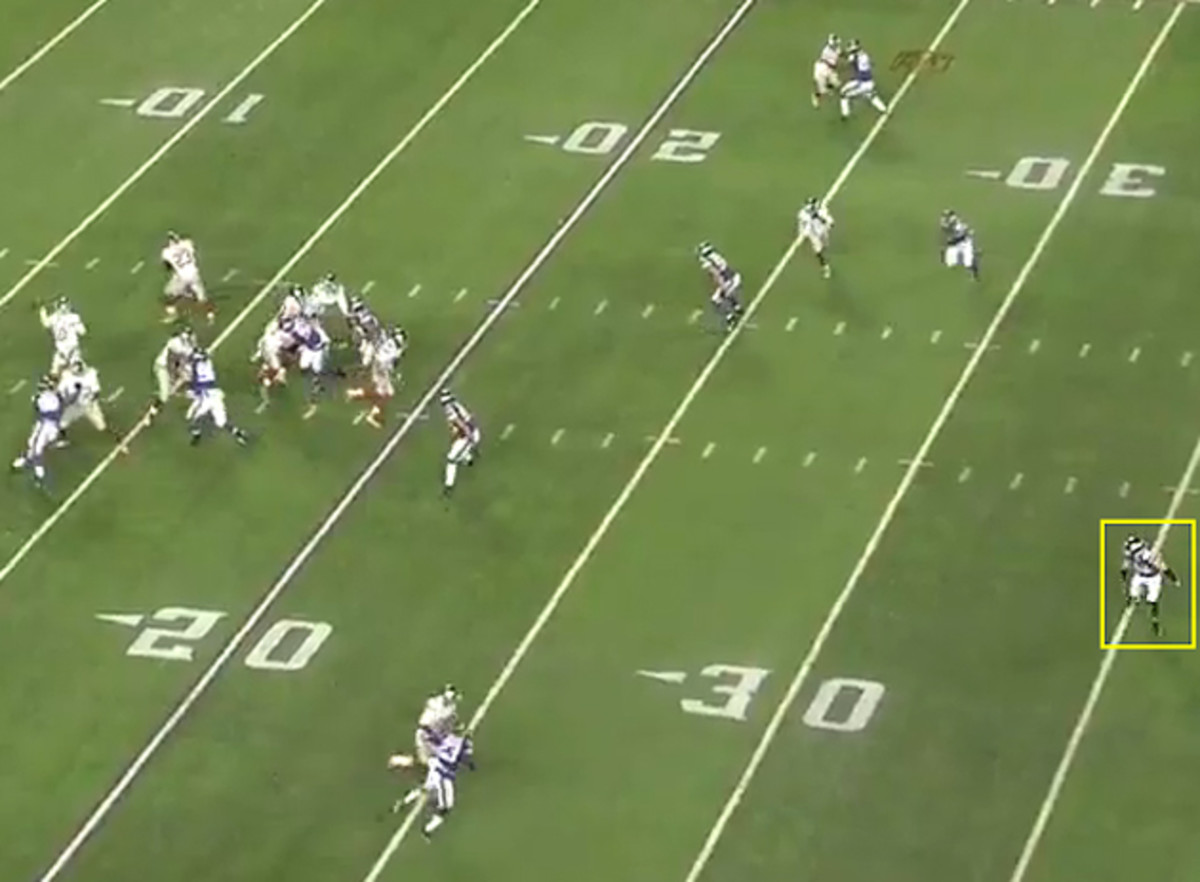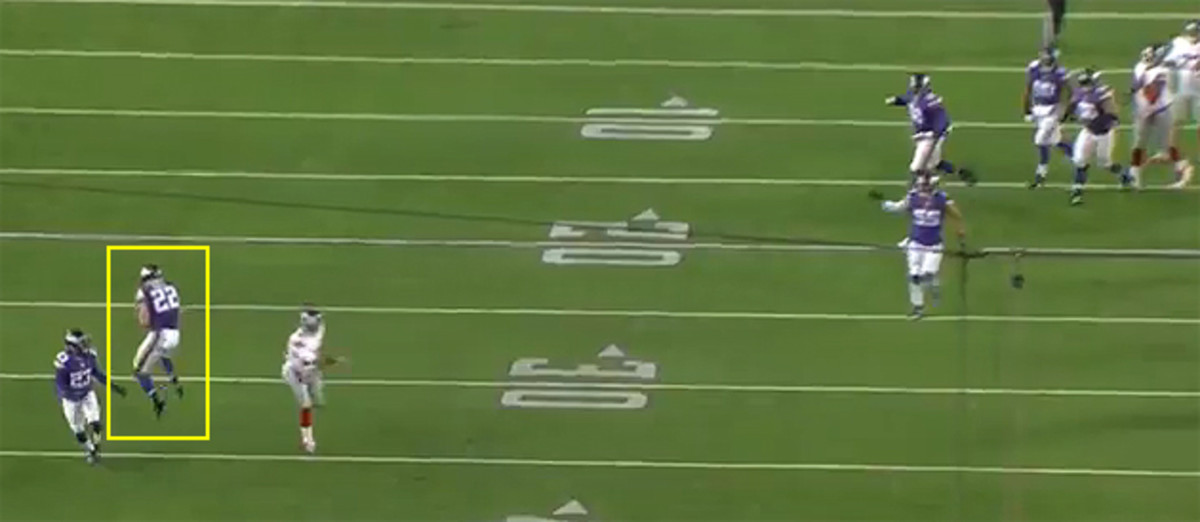Vikings have laid the foundation of the NFL’s next great defense

Your teams. Your favorite writers. Wherever you want them. Personalize SI with our new App. Install on iOS or Android.
Two of the last three Super Bowl champions—the Seahawks three years ago and the Broncos this year—got to the mountaintop with historically great defenses. The two units follow different philosophies (Pete Carroll’s Cover-1 and Cover-3 shells, Wade Phillips’s 5–2 base with aggressive sub-packages) but the common denominators are clear.
Both teams built and defined their defenses with young players developed to work in perfect concert within schemes they seemed built to run. Both defenses took fundamentally limited offenses and put them on their backs on the way to the Lombardi Trophy. The Seahawks were limited by the youth of their offense, while the Broncos ran up against the limitations of quarterbacks Peyton Manning and Brock Osweiler. Still, we discovered that in the NFL’s golden age of offensive football, a defense could still win it all.
Who will produce the next defense that rises to that level? The first place to look might be Eden Prairie, Minn., where the Vikings are preparing to build on last year’s division title.
The announcement Monday of a five-year contract extension with safety Harrison Smith underscores the primary reason for the Vikings’ potential sustained success: They have a ton of young, talented defensive players under contract for multiple years in the prime of their careers. There’s no better example of that than Smith, who was graded as last season’s top safety by Pro Football Focus and has played at a mostly exemplary level since he was selected out of Notre Dame in the first round of the 2012 draft. Last season, Smith allowed an opposing quarterback rating of 43.3, an incredible stat for a pass defender who plays deep as often as he does. But Smith is an every-down, every-situation player: In addition to centerfield duties, he can spread out to help against multi-receiver sets or hit the box to help against the run.
Vikings give Harrison Smith the contract to match his elite value
“I couldn’t imagine a better place to play and a better organization to be a part of,” Smith said after his contract was announced. “I just can’t say enough how blessed I am to stay here.”
Smith is now the NFL’s highest-paid safety (at least until the Chiefs pay Eric Berry), but that quote isn’t just a reference to his new deal. It’s also about how he fits with head coach Mike Zimmer's defensive concepts, and how Zimmer and general manager Rick Spielman have assembled a defense with the potential to carry the Vikings while their offense is in transition.
The Vikings finished 11–5 last year with a defense that lived up to Spielman’s ideal. Of the defensive starters last season, only nose tackle Linval Joseph, defensive tackle Tom Johnson, cornerback Terence Newman and safety Andrew Sendejo were not either drafted or signed as undrafted free agents by Minnesota. The nucleus of the team has been developed within the organization, and that’s the only way to establish consistency in a defense over a long period of time.
• LONGFORM: Lynch opens up in an SI/60 Minutes Sports exclusive
Many of the pieces were already in place when Zimmer arrived in Minnesota before the 2014 season, and he added the concepts he’d perfected over the years as one of the NFL’s most highly respected defensive coordinators. Zimmer prefers a base 4–3 defense with heavy nickel looks based on the opponent’s personnel, with aggressive cornerback play and interchangeable safeties. His linebackers must have the range to drop into coverage, but they must also flow to the ball and implement the A-gap blitzes and fake inside blitz coverage looks Zimmer has drawn up. The Vikings also like to design overload blitzes with late pre-snap movement to take offenses by surprise on passing downs. It’s a defense that looks simple at first, only to reveal all kinds of wrinkles that make it special. Most of all, what sets the Vikings apart is how their best players fit so well within the scheme.
The Difference-makers
LB Anthony Barr
Barr was the first player drafted in the Zimmer regime, and his pro coach has used him well. At UCLA, Barr was more of an edge rusher who would kick outside to a stretch/spread linebacker position on passing downs. With the Vikings, he has expanded his repertoire impressively in a very short time. Yes, he can still rush from the edge, but he is better suited to play at the second-level WILL position and make his presence felt in all aspects of the game: in blitzes, against the run and in coverage. Barr’s coverage abilities are perhaps the most pleasant surprise of his NFL development. Barr made his first Pro Bowl in 2015 with 54 solo tackles, 3.5 sacks and an interception.
DE Everson Griffen
Griffen made his first Pro Bowl in 2015, but he’s been improving his game for a number of years. Taken in the fourth round of the 2010 draft out of USC, he has proved that mid-round designation wrong with 22.5 sacks and a ton of pressures over the last two seasons. Zimmer prefers to put the 6' 3", 280-pound Griffen wide outside to force one-on-one matchups with offensive tackles. From that position, Griffen uses his top-level combination of explosion off the snap, flexibility to bend the edge and tremendous upper-body strength. Though his game is primarily about velocity and leverage, Griffen can also win with inside and outside moves. Last season, he had 10.5 sacks, 34 tackles, four passes defensed and a forced fumble.
Truth Detector: Will Trevor Siemian really be Manning's replacement?
DT Linval Joesph
Joseph doesn’t get the recognition he deserves because what he does doesn’t always show up in the stats, but the tape tells the whole story. He played through injuries last season, and the Vikings’ run defense definitely dropped off when he wasn’t available. The 6' 4", 328-pound Joseph is an absolute truck in the middle of the defense, and he has perfected the art of knifing through double teams and blowing up plays in the backfield, whether going up against zone or man blocking schemes. Joseph can rack up sacks, but that’s not really his primary role. He’s the guy who sets the physical tone at the line so that the players around him can do spectacular things.
S Harrison Smith
In today’s NFL, it’s a lot easier to play defense if you have a deep safety with the physical gifts and natural aggression to make plays, along with the football intellect to read the field quickly and react instinctively to whatever he sees. Over the last few years, Smith has joined Berry and Seattle’s Earl Thomas among the elite few who check all those boxes.
This pick-six against the Giants in Minnesota’s 49–16 Week 16 win is a great example. Smith moves to the top of the defensive backfield before the snap to get an ideal read on the routes, and you can tell that he has anticipated the route concept perfectly by the way he breaks to the offense’s right side, where Newman is covering receiver Rueben Randle.




“It was pretty much he read the quarterback," Zimmer said after the game. “You can ask him, but he’s a kid with great vision—see[ing] things, understands routes. We try to teach him to eliminate routes—what routes can affect him, what routes can’t affect him. Then obviously, he’s got to be able to read the quarterback and break and take the right angles and catch the ball.”
Back in Buffalo: Richie Incognito’s long road from pariah to relevancy
A dominant pass rusher or two, a pace-setting nose tackle, and one of the best safeties in the league? That’s a great start to a championship defense. The last piece the Vikings need from the formula followed by the Seahawks and Broncos is a cornerback who can shut down top receivers on a consistent basis. Zimmer’s schemes help outside corners a lot, but in the base defense, those guys will have to make plays by themselves. Zimmer has said that Newman’s primary value comes from his role as a coach on the field, which would make sense given that he was with the Cowboys and Bengals when Zimmer was the defensive coordinator in both places. The Vikings signed the 37-year-old Newman to a one-year, $3 million deal in March, signifying that they know his value and understand that at his age, the end could come soon. He played in every game last season, but it was the first time he had done that since 2010.
Trae Waynes, Xavier Rhodes, Captain Munnerlyn, and Mackensie Alexander. Those are the names of the cornerbacks who will need to step up if the Vikings are to compete for a championship. Waynes and Rhodes are young players still adapting to the complexities of the NFL. Munnerlyn is a valuable rotational player (especially in the slot), and 2016 second-round pick Alexander has the ability to play outside or in the slot. Munnerlyn is entering the last season of his current contract, so Alexander is one to watch. Rhodes has come the closest to that shutdown status, but he’s only three seasons into his career, so it comes and goes at this point.
With all that going for him, Zimmer is still not impressed with what his defense has done–at least, that’s what he’s telling the media.
Will 2016 be the turning point? Everything seems to be in place. Now, it’s up to the Vikings to live up to all that potential.
